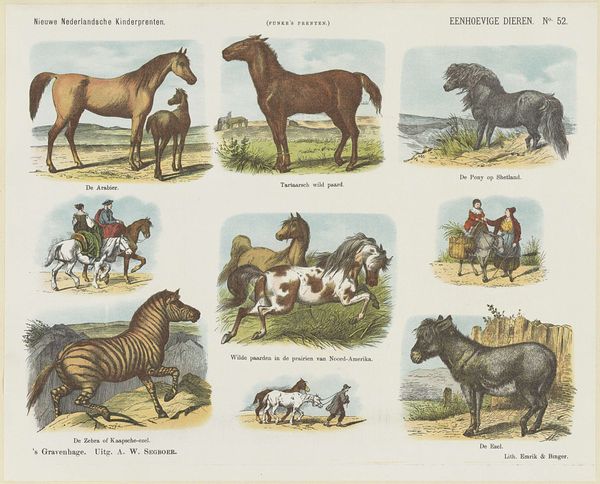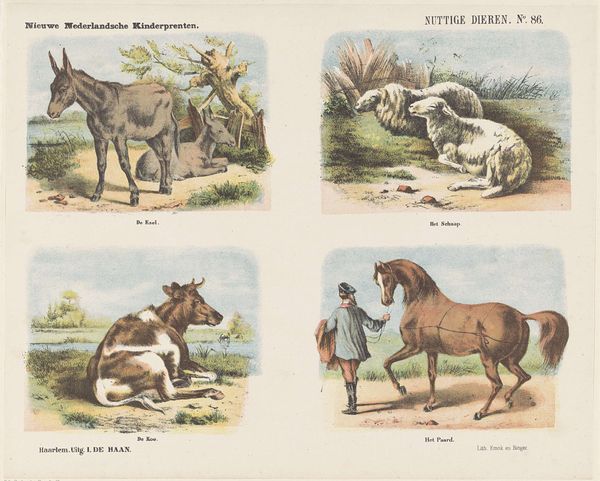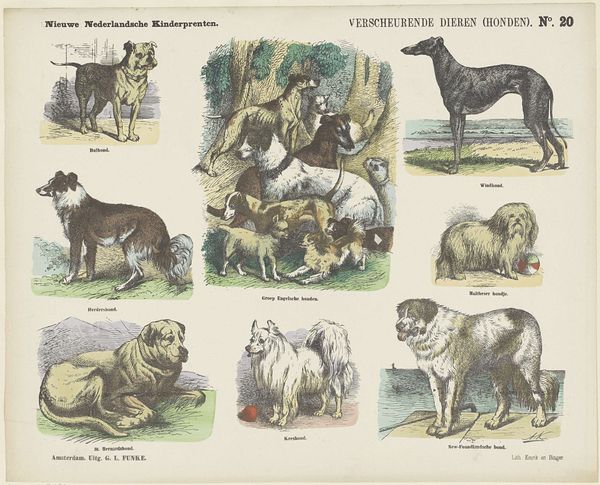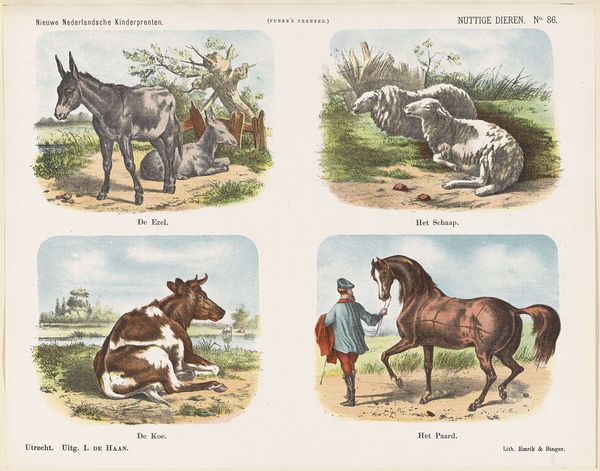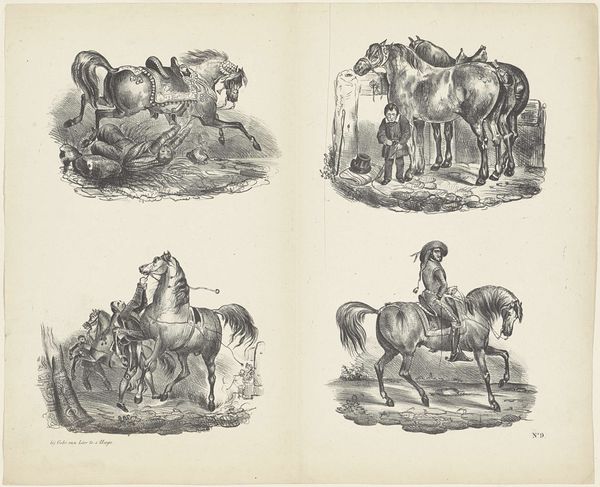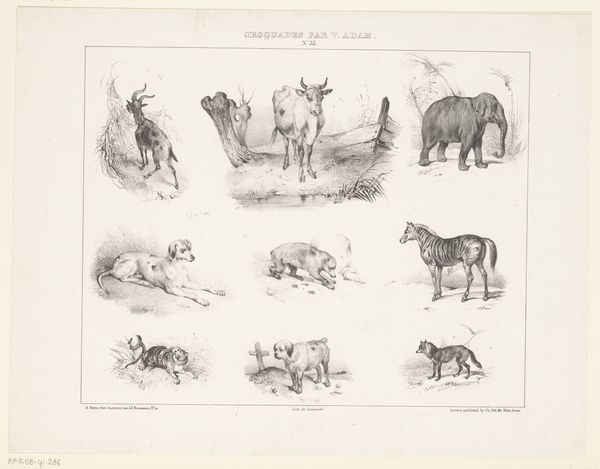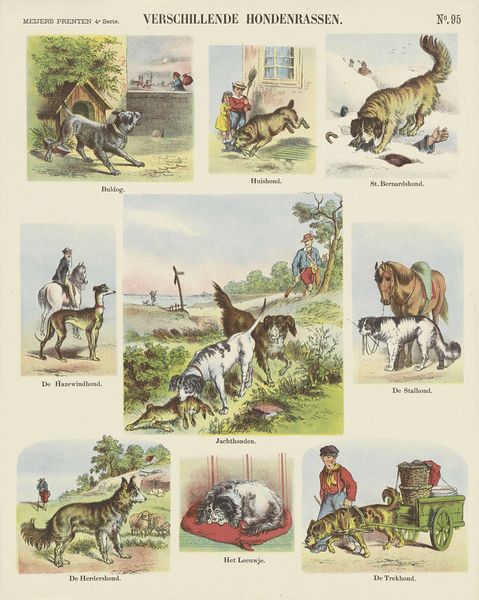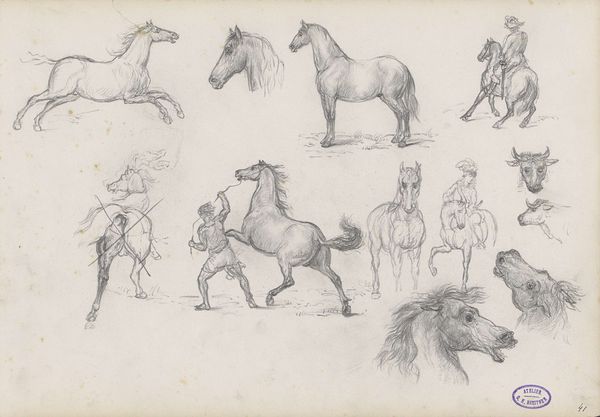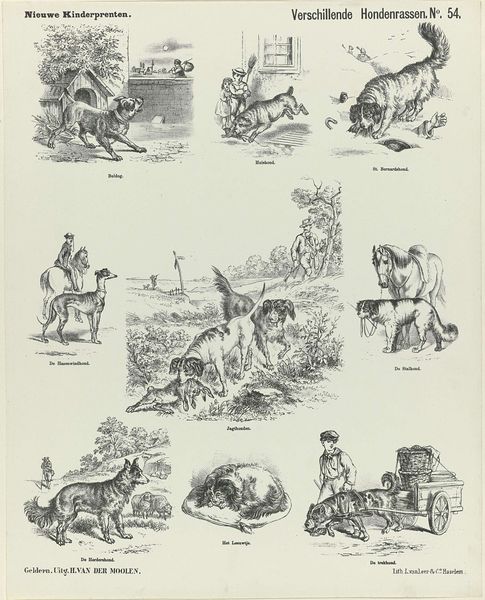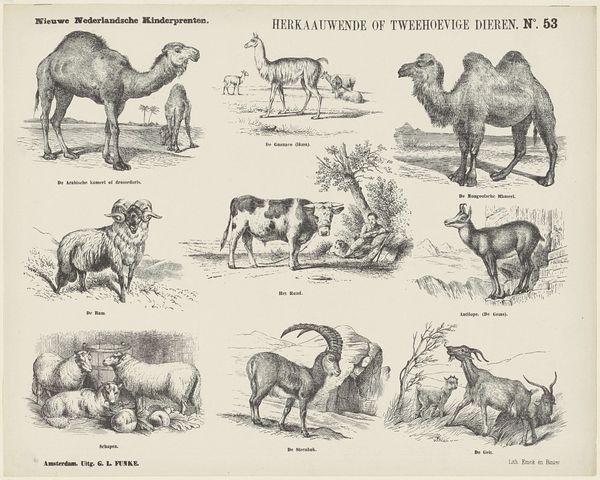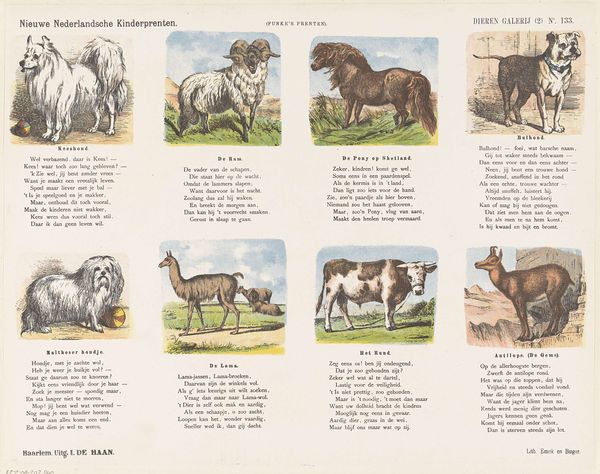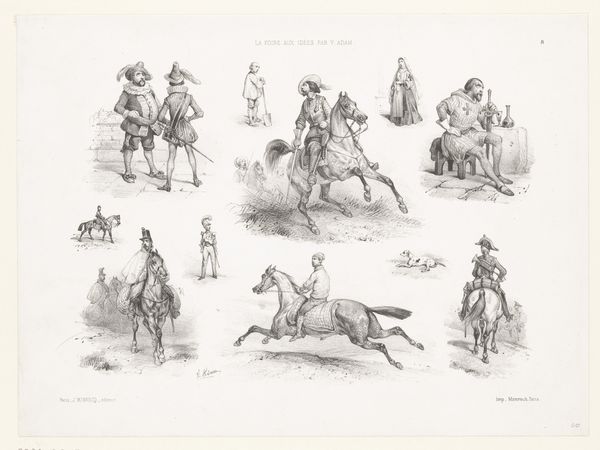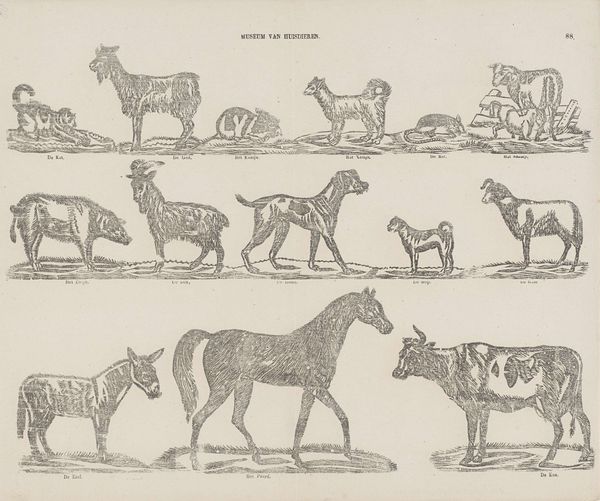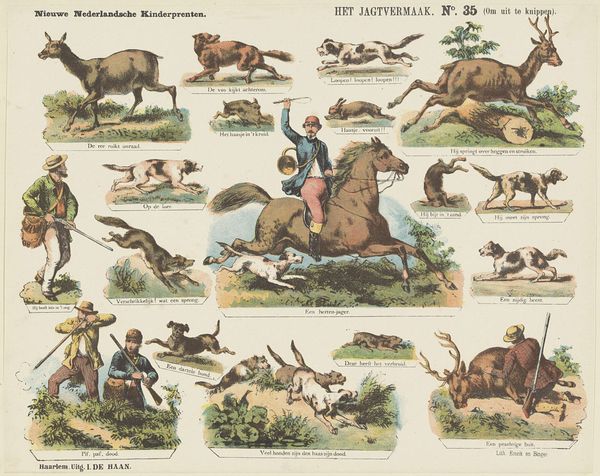
drawing, lithograph, print
#
drawing
#
animal
#
lithograph
# print
#
landscape
#
horse
#
history-painting
#
realism
Dimensions: height 338 mm, width 421 mm
Copyright: Rijks Museum: Open Domain
Editor: This lithograph print from sometime between 1875 and 1903, called "Eenhoevige Dieren," or "Hooved Animals," by Jan de Haan, is a collection of horses, ponies, and zebras rendered in great detail. What strikes me most is the evident care given to the lines, the etching, almost like an exercise in showing off printmaking’s possibilities. How would you interpret this work? Curator: From a materialist perspective, this piece becomes really interesting when considering its original function as a children's print. It was, presumably, mass-produced. I wonder what kind of labor went into making the lithographic stones? What were the working conditions like for the printers reproducing this image repeatedly? The act of creating multiple copies is significant here. Editor: So you are seeing past the subject of the image — animals — and into the work of making many copies for many children to consume. Interesting. Curator: Exactly. Think about the distribution networks as well. How did these prints reach their audience? And what kind of social values related to class and education are embedded in this accessibility of art for children? Do the details that impress you relate to making learning appealing and “realistic"? Editor: I never considered the social network through which the print traveled and the social values it conveyed! It makes me think about how different it is to look at art in a gallery versus art made for mass consumption. Curator: Precisely. Focusing on its materiality reveals that what appears to be a simple children's print speaks volumes about labor, consumption, and the dissemination of knowledge in a specific historical context. Editor: I see how approaching art from a materialist perspective helps uncover so much that would have otherwise stayed hidden beneath the surface of the image. Curator: Agreed. And hopefully inspires further questions about what and how images get made, and for whom.
Comments
No comments
Be the first to comment and join the conversation on the ultimate creative platform.
